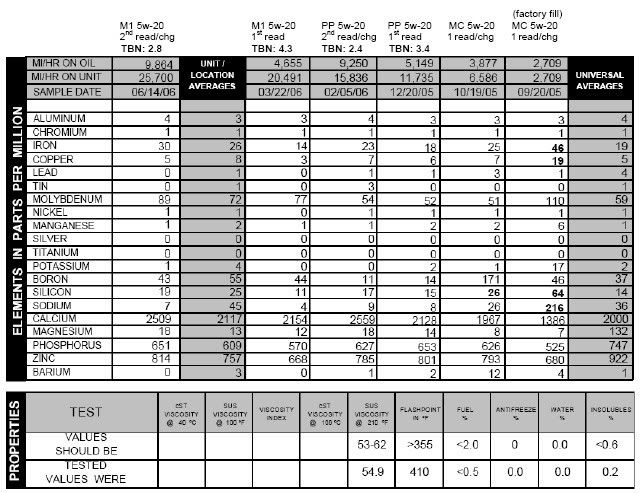The report shows all of the analysis taken from this trucks ('05 F150, 4.2L V6) oil since new.
A sample of the PP was taken at 5,149 mi. and then again after 9,250 mi. and changed.
A sample of the M1 was taken at 4,655 mi. and then again after 9,864 mi. and changed.

It looks to me that the Pennzoil Platinum does at least as good, if not better than the Mobil1.
The lower cost of the PP EOP fluid makes it an easy choice.
Notice the first half of the PP picked up 18ppm Fe. But continued through next half gaining only an additional 5ppm. (total 23ppm Fe)
The M1 picked up 14ppm Fe during first half, yet gainaing an additional 16ppm during last 5000mi. (total 30ppm Fe)
Seems to me that the M1 is not performing as well during the last half of service as the PP.
Both oils were well in grade at all analysis.
A sample of the PP was taken at 5,149 mi. and then again after 9,250 mi. and changed.
A sample of the M1 was taken at 4,655 mi. and then again after 9,864 mi. and changed.

It looks to me that the Pennzoil Platinum does at least as good, if not better than the Mobil1.
The lower cost of the PP EOP fluid makes it an easy choice.
Notice the first half of the PP picked up 18ppm Fe. But continued through next half gaining only an additional 5ppm. (total 23ppm Fe)
The M1 picked up 14ppm Fe during first half, yet gainaing an additional 16ppm during last 5000mi. (total 30ppm Fe)
Seems to me that the M1 is not performing as well during the last half of service as the PP.
Both oils were well in grade at all analysis.


